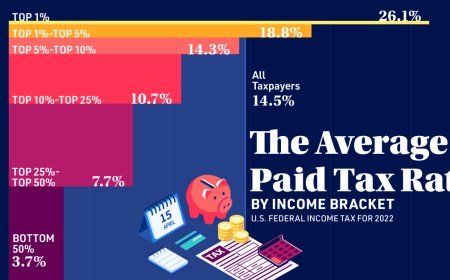Boost Efficiency and Member Satisfaction with a Modern Golf Course Management System
In today's competitive landscape, golf clubs are no longer just about pristine fairways and elegant clubhouses. To thrive and retain members, they must offer seamless experiences both on and off the course. This is where a golf course management system becomes essential. By integrating modern digital tools into daily operations, clubs can enhance administrative efficiency, increase member satisfaction, and ensure sustainable growth.

The Evolving Needs of Golf Clubs
Golf clubs have transformed into dynamic community hubs, often offering much more than just the game. Dining, retail, fitness, event hosting, and leisure services have become standard offerings. Managing these diverse services manually or through outdated tools creates inefficiencies and negatively impacts the member experience.
Members now expect more than tee timesthey seek convenience, personalization, and seamless communication. Clubs, in response, must invest in systems that streamline operations while fostering stronger member engagement. Enter the golf club software systemsa suite of digital tools that can revolutionize the way golf clubs operate.
What Is a Golf Course Management System?
A golf course management system is an integrated software solution designed specifically to handle the complex operational needs of golf courses and clubs. From tee time scheduling to billing, inventory, CRM, and reporting, these systems offer centralized control and automation of routine tasks.
A typical system may include:
Online tee time booking and management
Member and guest check-in systems
Point-of-sale (POS) for pro shops and restaurants
Tournament and event scheduling
Member communication portals
Reporting and analytics dashboards
Mobile app integration for members
These components work in harmony to deliver not only administrative relief for staff but also a vastly improved experience for club members.
Enhancing Operational Efficiency
The primary benefit of adopting a golf course management system is streamlined operations. Traditional management methods are prone to errors, especially during peak hours or high-volume days. Double bookings, delayed payments, and miscommunication can result in lost revenue and dissatisfied members.
With automated scheduling and real-time data synchronization, modern systems eliminate these issues. Staff can manage tee times, member preferences, and billing all from one platform, ensuring nothing falls through the cracks. Additionally, integrated POS systems allow seamless sales tracking across all departmentsbe it merchandise, food, beverage, or equipment rental.
Automation reduces the administrative burden and frees up employees to focus on enhancing the member experience. This translates to faster service, better communication, and increased productivity.
Improving Member Satisfaction
A modern golf club software system isn't just about helping staffit plays a critical role in member satisfaction. In the digital age, convenience is king. Members expect self-service options, personalized offers, and real-time updates, all of which a well-designed software platform can deliver.
Online Booking: Members can book tee times, register for events, or reserve facilities anytime, anywhere.
Personalized Communication: Clubs can send automated emails or app notifications tailored to individual preferences, be it birthday greetings, exclusive offers, or event invitations.
Transparency: Billing histories, membership renewals, and account balances are easily accessible to members, reducing confusion and the need for manual queries.
Mobile Access: With integrated mobile apps, members can manage their club interactions from their phones, including ordering food, checking schedules, or tracking handicaps.
These conveniences improve the overall perception of the club, making members feel more valued and connected.
Data-Driven Decision Making
Another powerful advantage of a golf course management system is data analytics. By capturing and analyzing member behavior, spending habits, and operational metrics, club managers gain deep insights into what works and what doesn't.
For example, usage data may reveal which days of the week are busiest, which members are most active, or which products are underperforming. With such insights, managers can:
-
Optimize staffing and inventory levels
-
Design targeted promotions
-
Improve service delivery timing
-
Develop loyalty and rewards programs
-
Forecast trends and make strategic decisions
This data-driven approach ensures the club isnt just reacting to issues but proactively improving member engagement and financial performance.

Streamlined Communication and Member Engagement
Communication is a cornerstone of any clubs success. Ineffective communication can lead to missed events, unclear policies, and member dissatisfaction. With golf club software systems, communication becomes effortless and centralized.
Through dedicated member portals, mobile apps, or integrated email tools, club managers can update members instantly on weather conditions, tournament results, event reminders, and policy changes. This not only fosters transparency but also helps build a sense of community within the club.
Moreover, feedback collection tools can be integrated to allow members to share their experiences directly. This fosters a culture of continuous improvement and shows that the club values its members input.
Scalability and Future-Proofing
Modern golf club software systems are designed to grow with your business. Whether you're operating a small local course or a large multi-facility resort, these systems can scale accordingly. Cloud-based solutions, in particular, offer the flexibility to add new features, expand databases, and integrate with other tools over time.
Furthermore, as technology evolves, these platforms often receive regular updates, keeping your club ahead of the curve with the latest innovationsfrom AI-driven analytics to integrated IoT for course maintenance.
Cost Efficiency Over Time
While theres an initial investment in implementing a golf course management system, the long-term ROI is significant. Reduced manual errors, better member retention, higher staff productivity, and improved financial oversight all contribute to higher profitability.
Additionally, automation reduces the need for redundant roles or manual record-keeping, saving on labor and paper-based costs. The system essentially pays for itself over time by unlocking new revenue streams and preserving existing ones.
Conclusion
In an age where convenience, personalization, and efficiency define customer expectations, golf clubs can no longer afford to operate on outdated systems. Adopting a modern golf course management system is no longer a luxuryits a necessity for staying competitive and keeping members happy.
By leveraging robust golf club software systems, clubs can streamline operations, enhance member engagement, make smarter decisions, and create a seamless, enjoyable experience for everyone involved.
For golf clubs seeking a comprehensive, intuitive, and future-ready solution, Cobalt Software stands out as a trusted partner. With cutting-edge features and dedicated support, Cobalt Software helps golf courses of all sizes unlock their full potential and deliver exceptional service to their members.




































